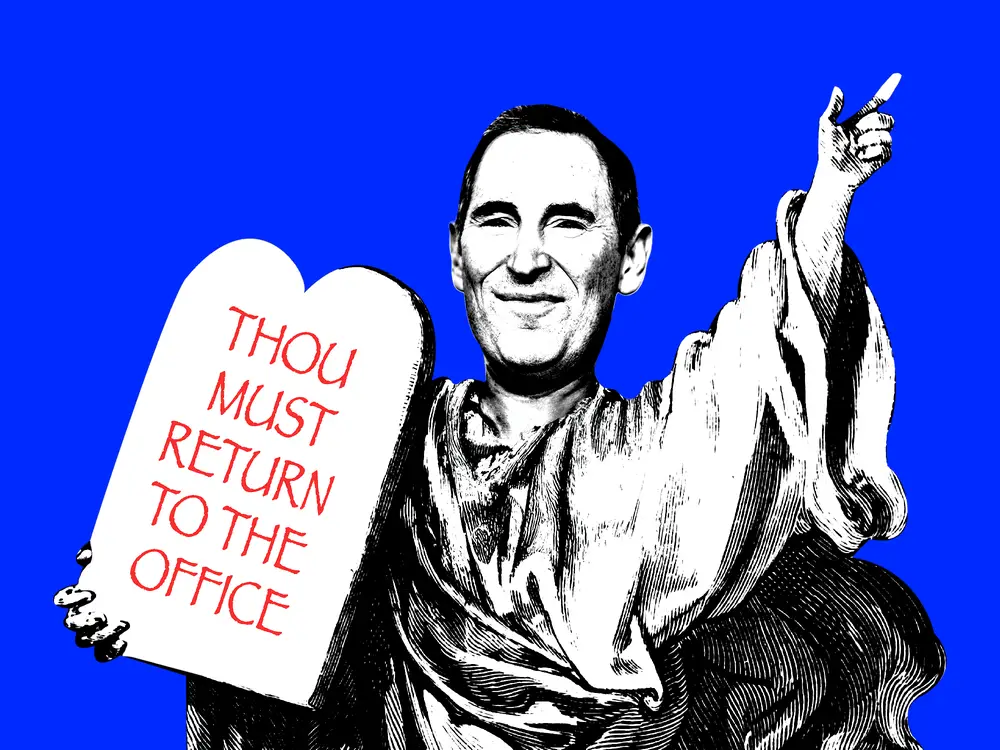Amazon’s RTO commandment and the office work shibboleth

“Office mandates are never going to work.”
Thus spoke Salesforce CEO Marc Benioff in 2022. In those ancient times, tech companies embraced remote work as an unstoppable innovation revolution.
Now, they’re getting all biblical about in-office work. Amazon CEO Andy Jassy just issued the most extreme commandment: All corporate employees must come to the office 5 days a week.
Extremism is never the answer, though. The real world is messy and most attempts to put strict guardrails around human behavior are futile.
The reality is that there are benefits to both remote and in-office approaches. The natural course will be that a hybrid approach evolves and companies will support top employees doing what works best for each of them. Some workers will be fully remote. Some will spend a few days in the office, while others be in all the time.
Remote work benefits
Remote work supports a more diverse employee base by helping companies hire more easily in different locations. It was a boon for women, while in-office rules may hurt their careers.
Forcing staff to work in huge, expensive metropolises is also expensive. For employees, they must pay higher rent or shell out more to own homes near big cities.
For companies, operating large offices is a massive burden that seems kinda silly now. Google saved $1 billion in just one year through remote work. And no, bailing out developers who built too many offices is not a good reason for RTO.
Commuting five or more hours a week takes away time that employees could be spending on productive work. Not to mention the environmental cost from all that extra pollution.
In-office benefits
On the flip side, new workers who need training and mentorship sometimes miss out and feel isolated by sitting at home every day by themselves.
It’s also easier to be rude or thoughtless with colleagues when they’re on the other side of a Slack message or work email. In person, people are often more polite and their ideas are communicated with more visual cues that help collaboration.
B-17 writes brilliantly about the future of work. In December, she described a study that found collaborating in person produced more breakthroughs than remote work.
More generally, it’s fun to be around other humans. And working hard together in an office creates bonds that can’t be so easily formed over an internet connection.
The office shibboleth
Is that enough to order everyone back to the office 5 days a week? Of course not. All those other remote work benefits would be lost.
The truth is that in-office work is a shibboleth. A remnant of a former time that some traditional folks are trying and failing to cling to.
The march of technology was already making remote work possible and effective. Amazon’s own pioneering cloud services have been a driving force behind this. Collaboration software and tools, powered by Jassy’s AWS brainchild, revolutionized work even before the pandemic.
Then, COVID-19 provided the perfect real-world test case: Could the modern economy survive when everyone was stuck at home?
The answer, especially for the tech industry, was a resounding yes. As millions of people got more things done online, tech company revenue and earnings surged. Amazon’s own business boomed as more people relied on the cloud to get work done.
Old-school gut versus data
This is what makes Amazon’s new mandate so head-scratching. The data doesn’t support such an extreme, old-fashioned approach.
In fact, Jassy admitted this. During an internal fireside chat last year, he was pressed by an Amazon employee to share data that supported an RTO mandate. Instead of offering data points, Jassy described it as a “judgment” call and compared it to other big decisions that weren’t widely supported by data in the past, according to a recording of the meeting obtained by B-17.
This is a company that usually obsesses over data-driven decisions, and pitches customers on taking the same approach through its cloud business.
The inevitable RTO exceptions
Then, there will always be exceptions that chip away at broad in-office mandates and breed resentment among some staff.
Employees who are perceived as the most valuable by companies will get to set their own rules. Why? Because they may jump to a remote-friendly rival if they don’t get what they want. The higher up the executive ranks you go, the more this happens.
Goldman Sachs CEO David Solomon has raged against remote work, citing an episode when he ran into a junior employee at a restaurant in the Hamptons in the middle of a weekday, according to Bloomberg. Of course, Solomon himself was at the same restaurant at the same time, not in the office.
The new CEO of Victoria’s Secret is allowed to work remotely, according to Fortune. Starbucks’ new leader is using the corporate jet to commute to the office, while most employees sit in traffic or ride public transportation.
James Hamilton sailed around the world in a boat for years while leading Amazon’s cloud infrastructure efforts. The company has some of the best tech in this field, so he was certainly doing a great job while not in the office. (Last time we checked, in 2021, he’d gotten an apartment in Seattle).
Benioff’s messy approach
Salesforce’s Benioff has flip-flopped on this issue.
A year ago, he said: “I’m a remote worker. I’ve always been a remote worker my whole life.” (The CEO likes to hang out a lot in Hawaii). “I don’t work well in an office. It just doesn’t work with my personality,” he added.
Meanwhile, Salesforce recently rolled out in-office requirements for some employees. There are 3 tiers, and team leaders decide how to designate different roles:
- Office-Based: Staff work in-person 4 to 5 days per week
- Office-Flex: Work in-person 3 days a week; or 10 days per quarter for some engineering teams
- Remote: Work primarily from home or at a customer site
This is messy. But Benioff is at least admitting the reality of how employees work in the modern world.
“For some of them, they need to rebalance home and work. Some need to spend more time in the office. Some need to spend more time at home. Every person’s different, but I think to optimize the workforce, you have to realize it’s not a one-size-fits-all agenda,” he said.
“People need to focus on being happy,” he added.
Amen to that.






